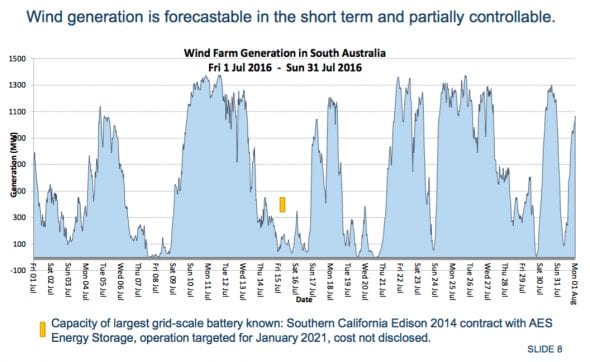The Australian Energy Market Operator has told energy ministers meeting in Canberra on Friday that there were no system security or reliability issues in South Australia in July.
In a presentation debunking many of the myths that have been circulated by the fossil fuel lobby and the Murdoch media, the AEMO delegation also said that price volatility was normal, and occurred in all states, and that wind energy was predictable in the short term.
The presentation was made by AEMO Chair Dr Tony Marxsen and acting chief executive officer Karen Olesnicky, and was part of a series of presentations made at the meeting.
“There were no system security or supply reliability issues in South Australia during the month,” they said in their presentation, adding: “AEMO review of events has revealed no departures from normal market rules and procedures.”
There has been controversy over those price spikes, and many recent reports have pointed to the “gaming” of prices through “rebidding” and “withdrawal” of generation capacity. None of this is necessarily illegal, however, and simply points to the lack of competition in the market.
AEMO’s comments are important because it underlines the point that there was never any real risk of the power going out, as some have suggested. The real issue is about competition and ensuring that new technologies, such as battery storage, are encouraged to help minimise the price spikes.
The graphs included several interesting ones:

This was on the volatility in the markets. The price of electricity spent as much time below zero as it did above $2,485/MWh.

Market price volatility is a feature of all markets. Indeed, as this graph above shows, the amount of volatility in South Australia has been considerably reduced in South Australia since the advent of wind and solar. Queensland, with minimal amounts of large scale wind generation, has had more volatile pricing.

This on wind energy, showing the contribution of wind during the month.








